Abstract
OBJECTIVE: To examine nursing home demand, focusing on how Medicaid affects demand, the role of economic variables, and on important interactions between explanatory factors. DATA SOURCES: From the 1989 National Long Term Care Survey, a nationally representative sample of community-based and institutionalized elderly persons with disabilities (N = 3,837). Survey data are merged with state- and county-level data on Medicaid policy and local market conditions. STUDY DESIGN: Sample members are classified as Medicaid-eligible or private pay, were they to enter a nursing home. The probability of being in a nursing home is estimated separately on these two groups using probit. To explore interactions, these subsamples are further divided between married and unmarried persons and between persons with high and low levels of disability. PRINCIPAL FINDINGS: Demand for nursing home care systematically differs, depending on eligibility for Medicaid. This is attributed in part to the structure of Medicaid benefits. Although economic factors do not appear important to demand decisions in the aggregate, they play a larger role among married persons relative to unmarried persons, and among less disabled persons relative to highly disabled persons. CONCLUSIONS: Understanding the nature of nursing home demand requires careful consideration of the different consumption choices people face by virtue of their eligibility for public benefits. Because behavioral responses to changes in policy are found to differ among various groups of disabled persons, policymakers should be sensitive to how these differences affect the efficiency and distributional effects of specific policy changes.
Full text
PDF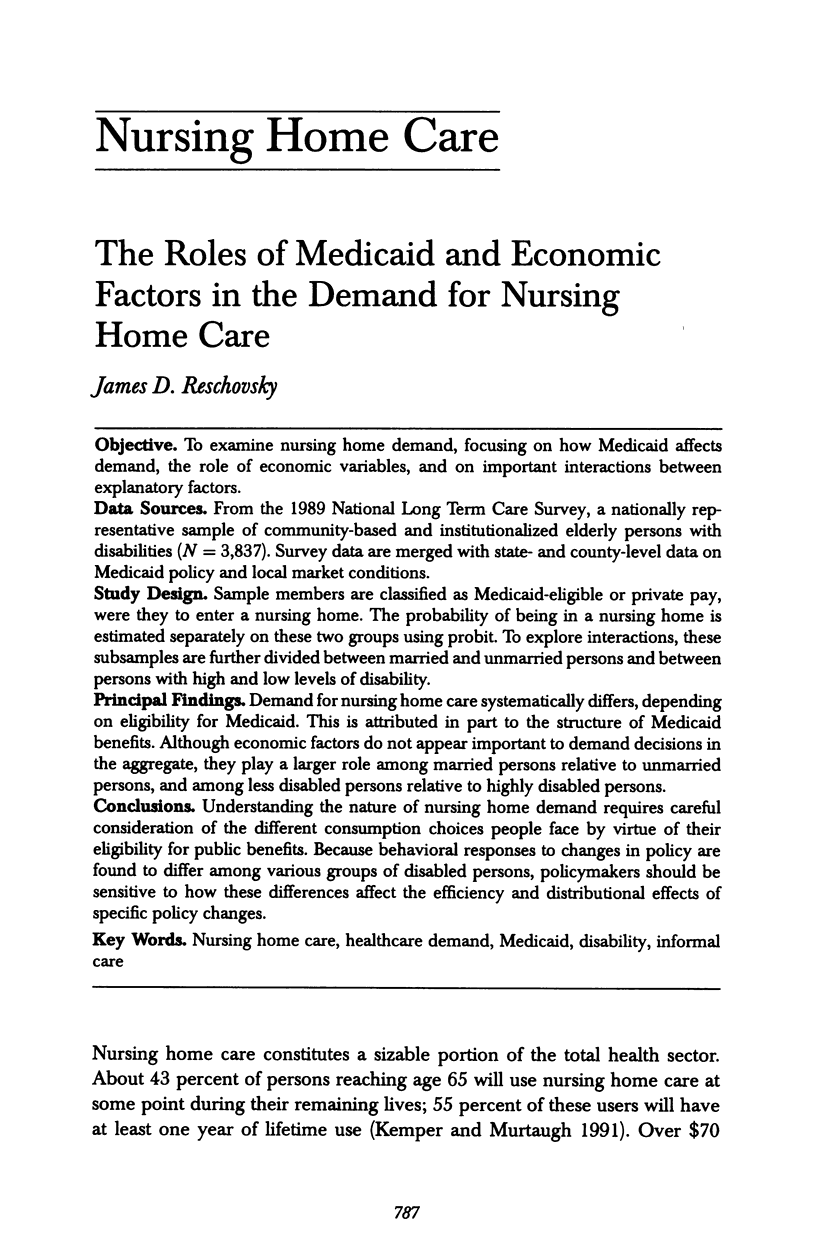
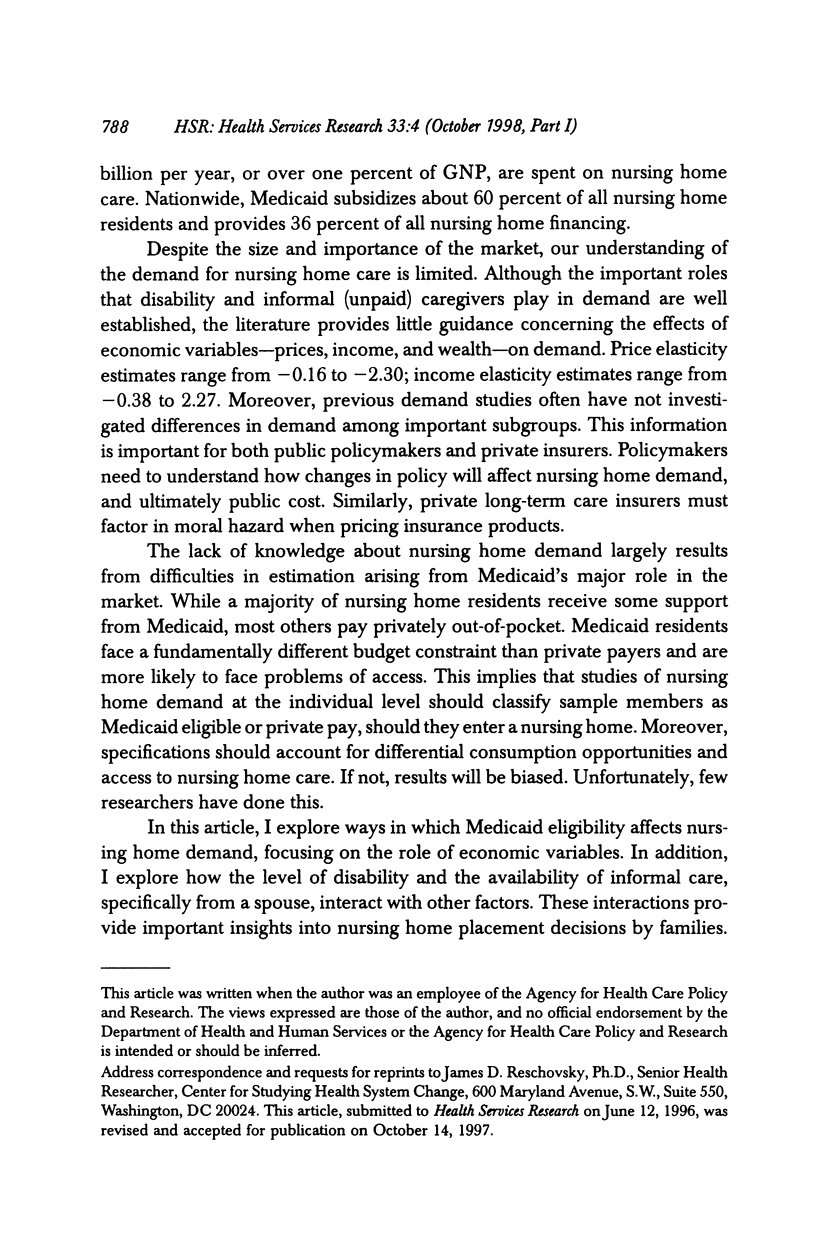

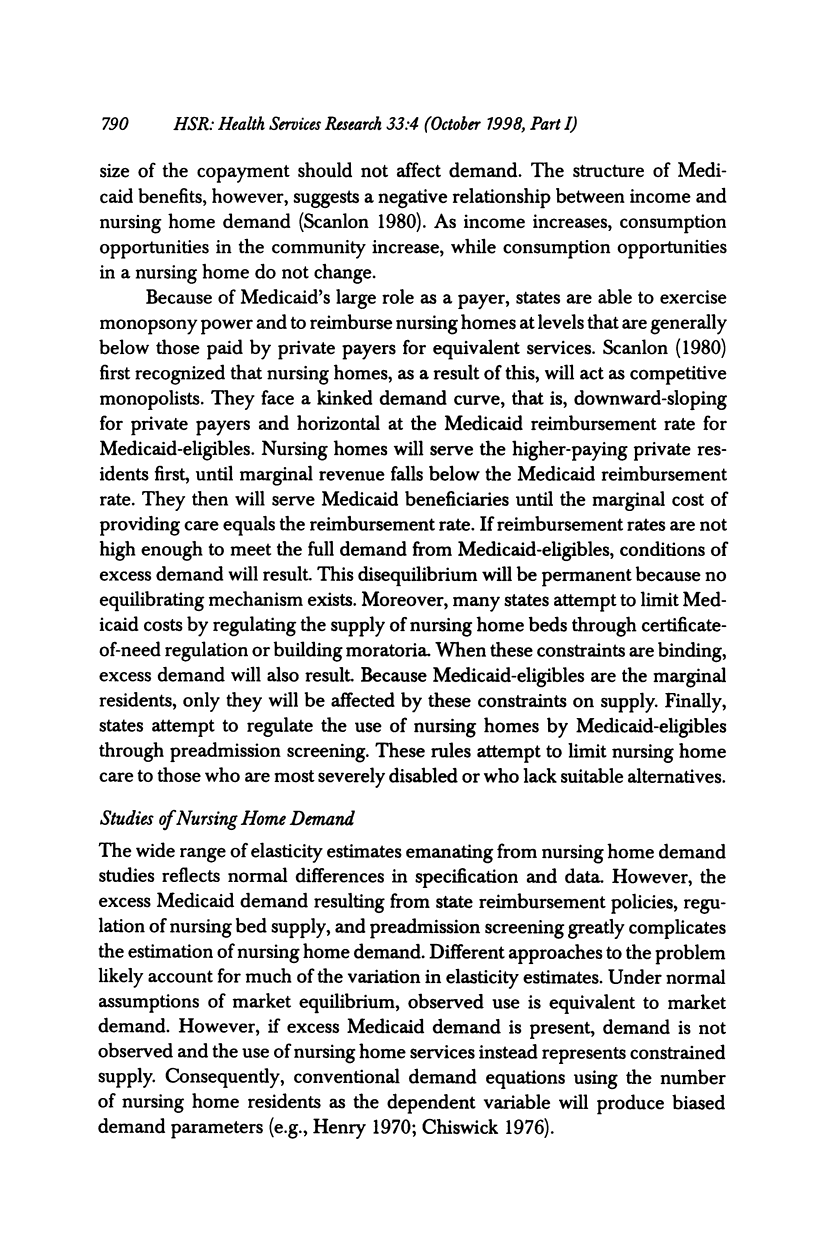
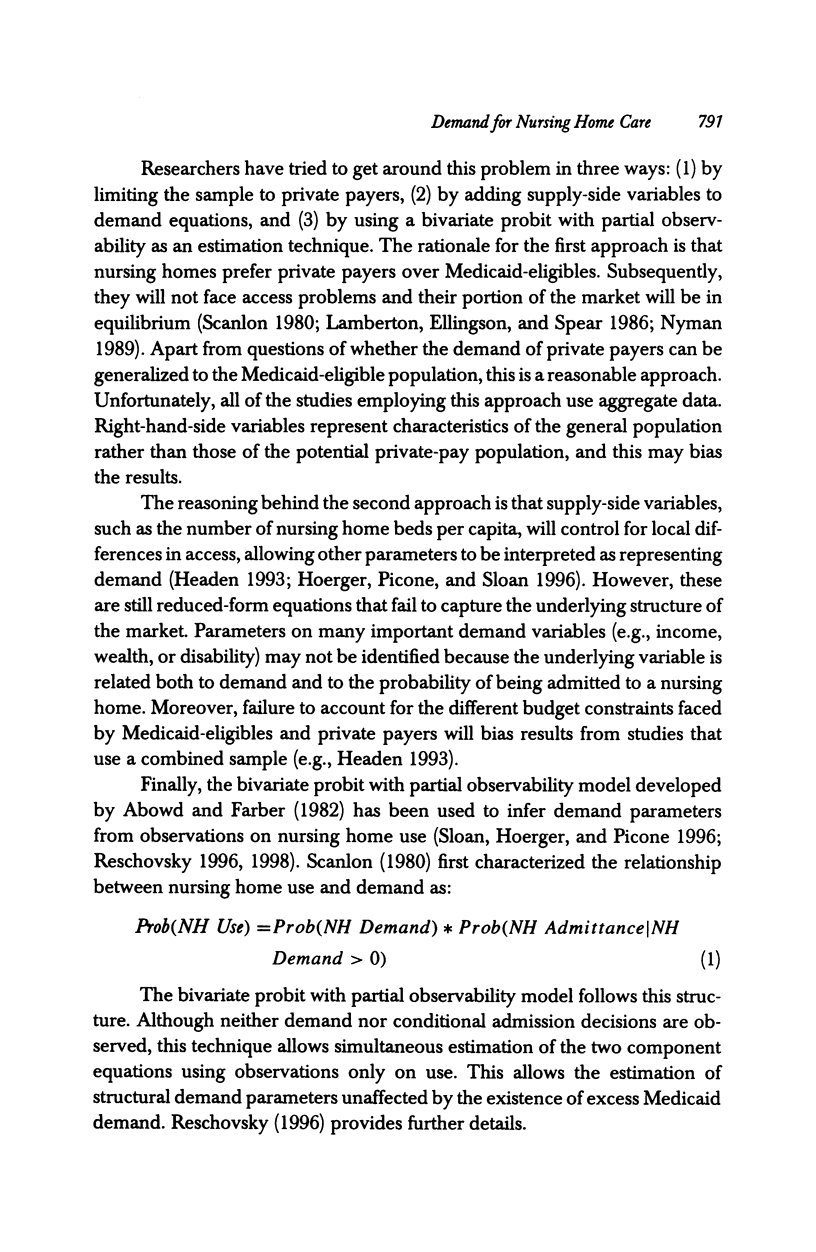
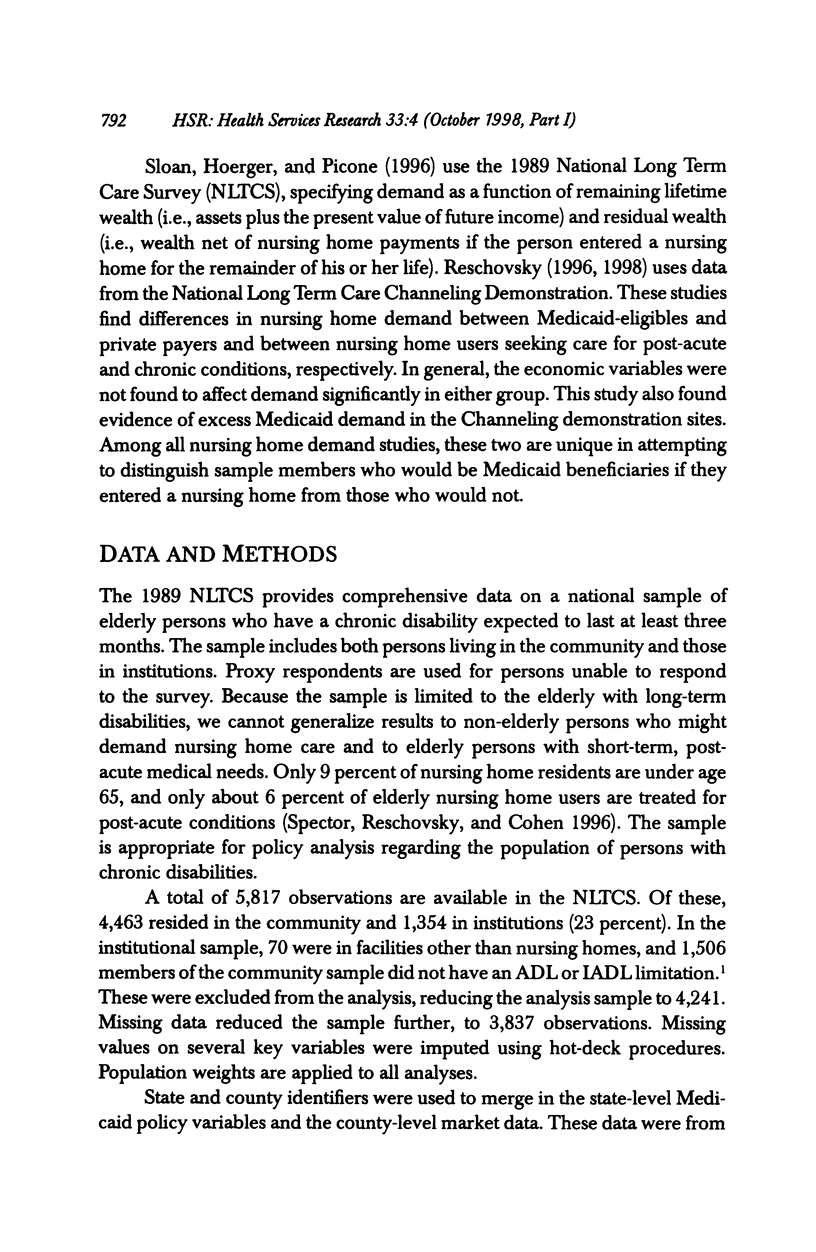
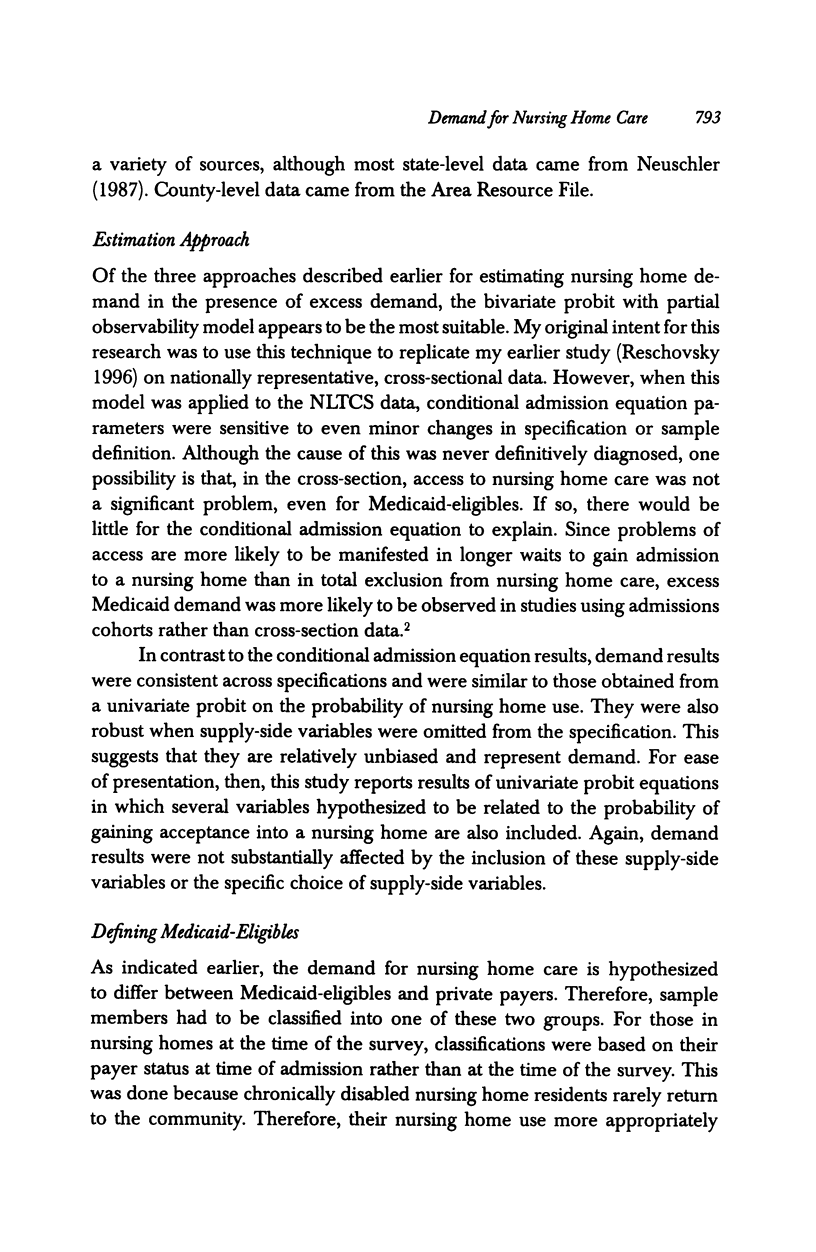
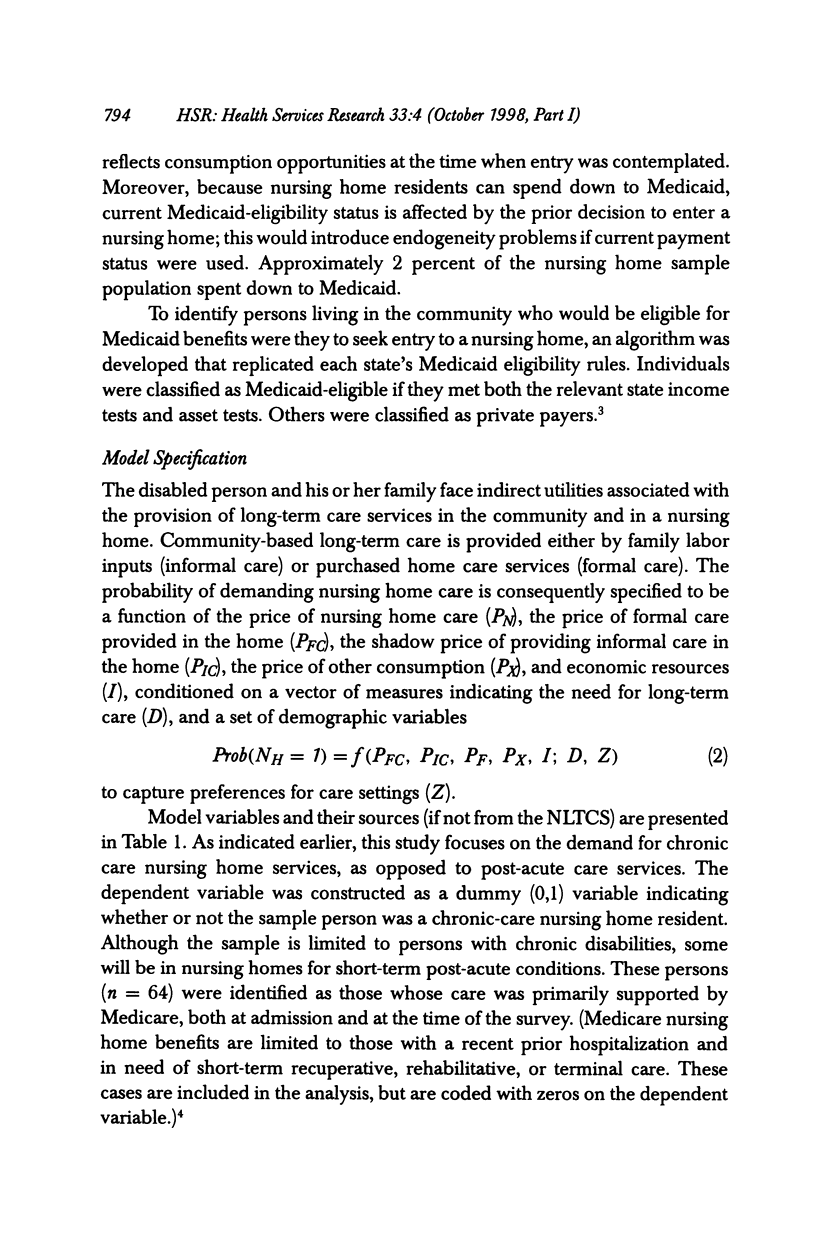
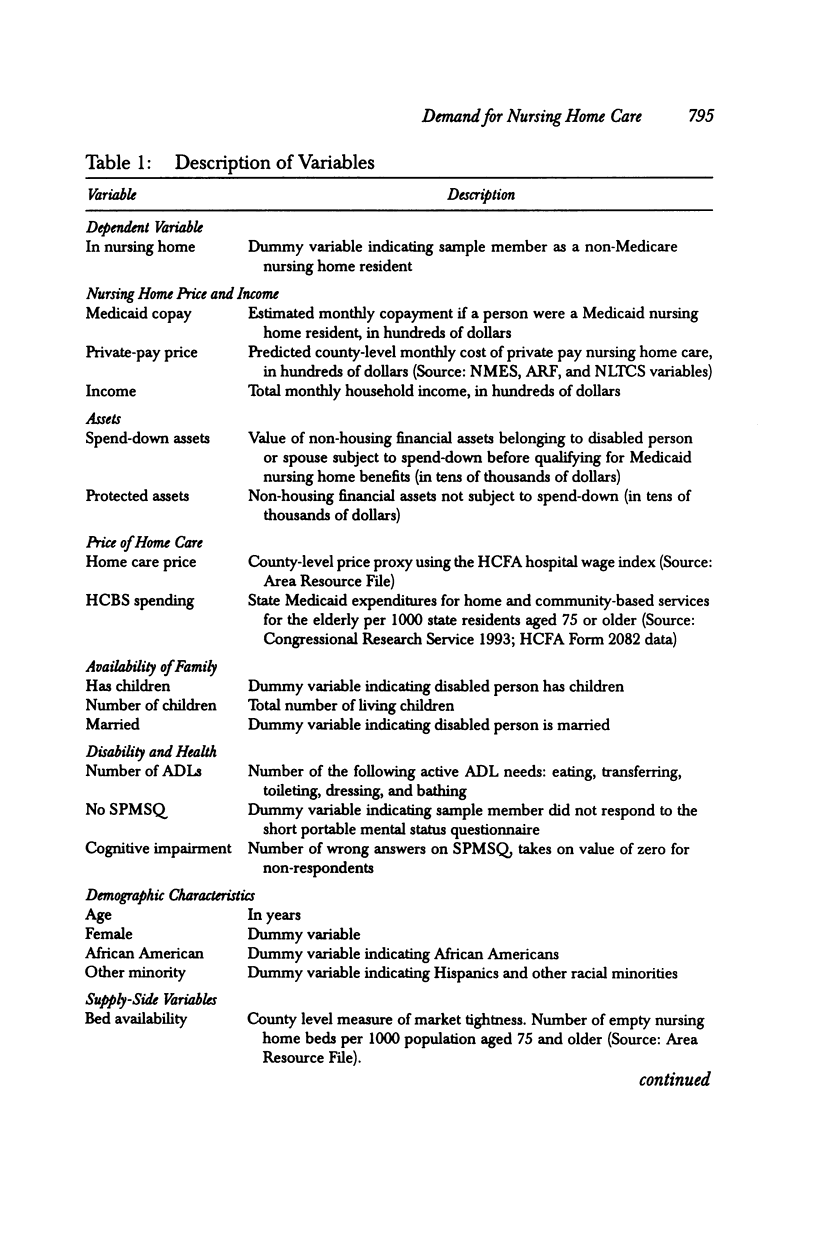
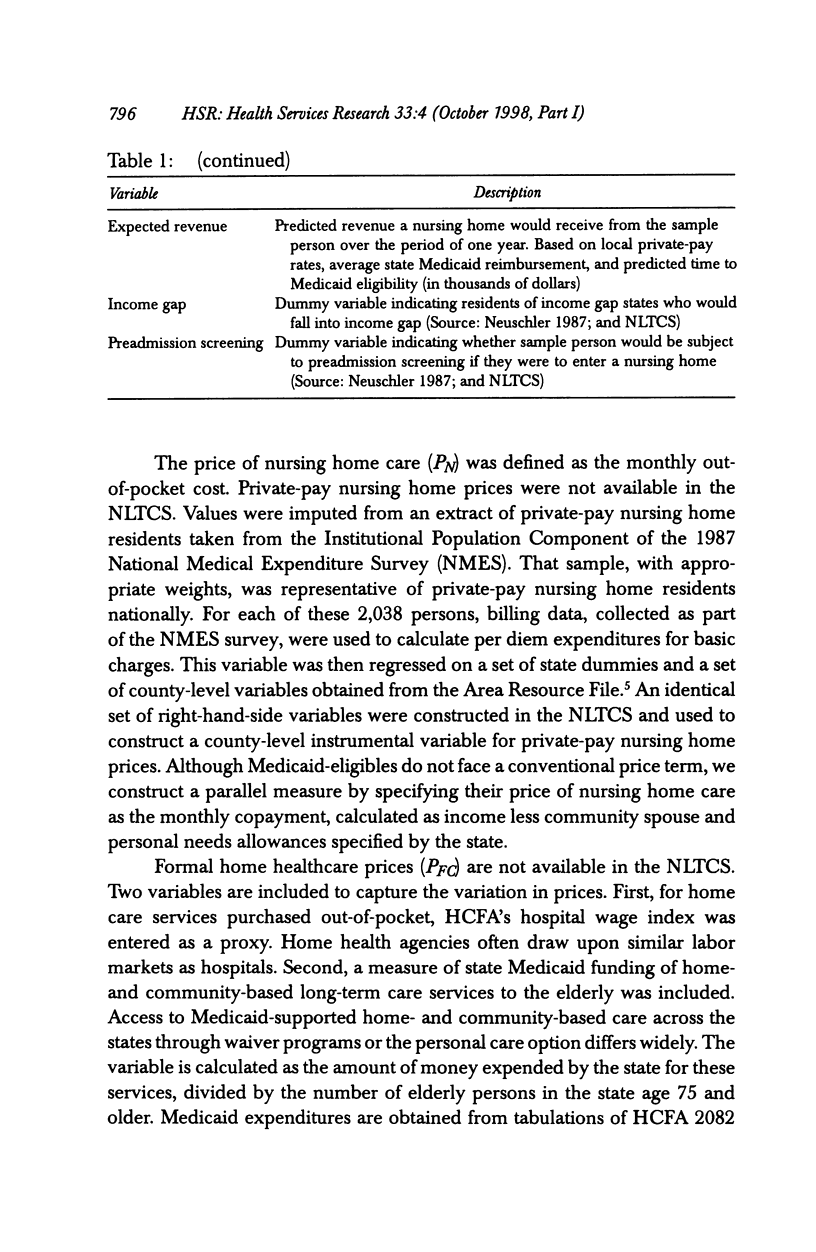
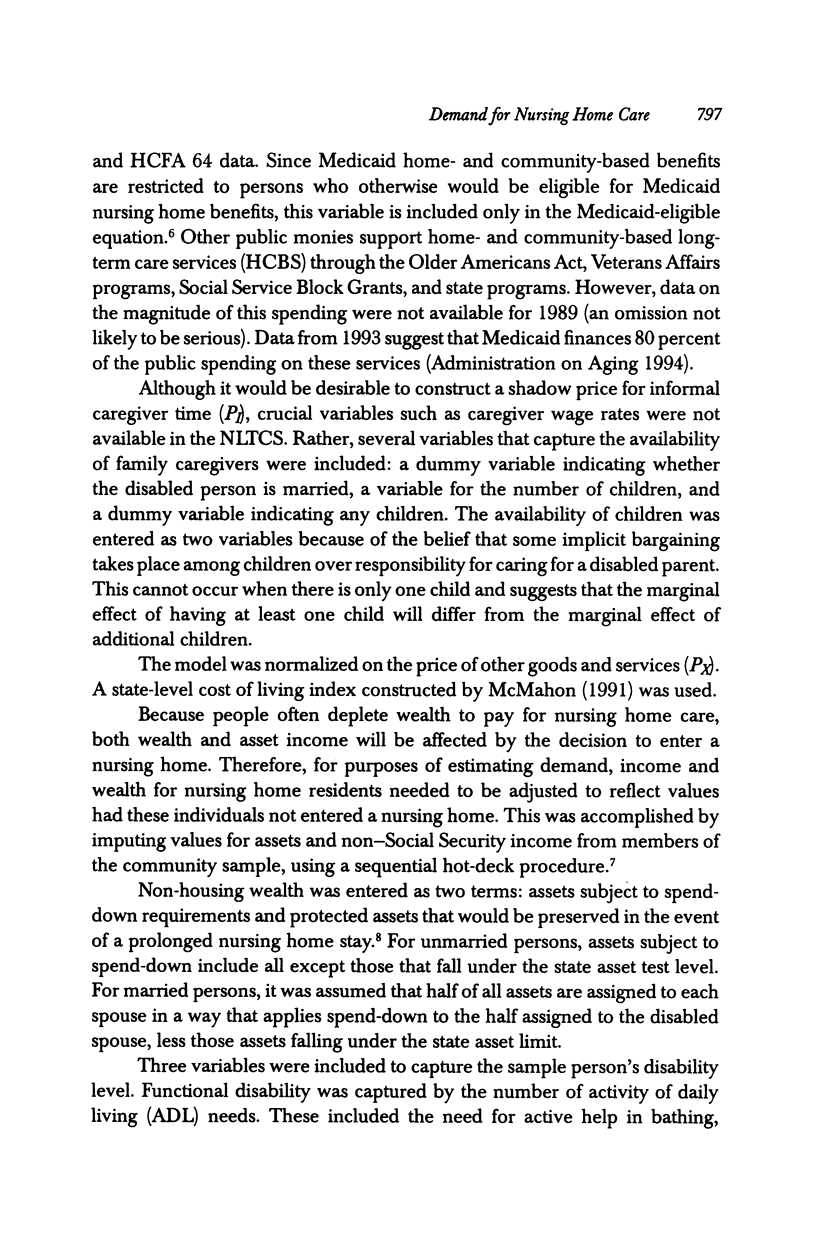
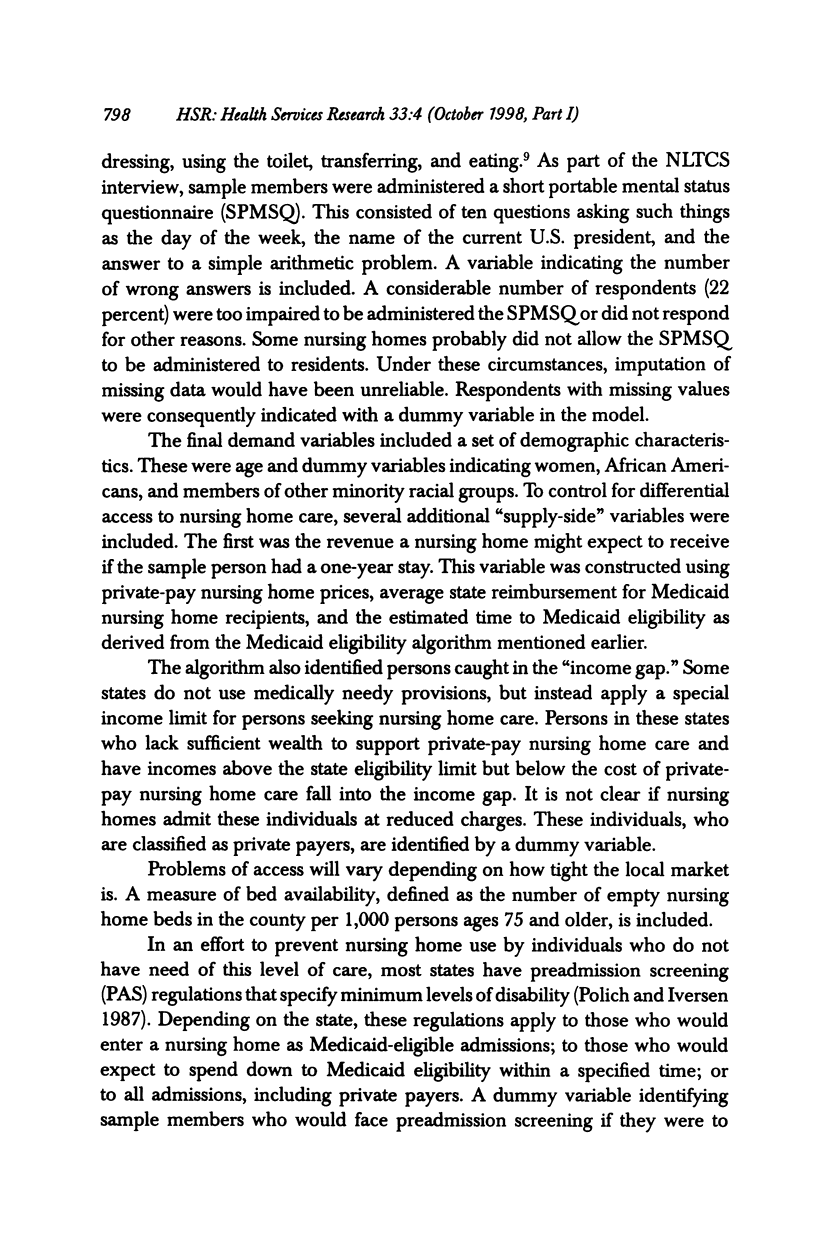
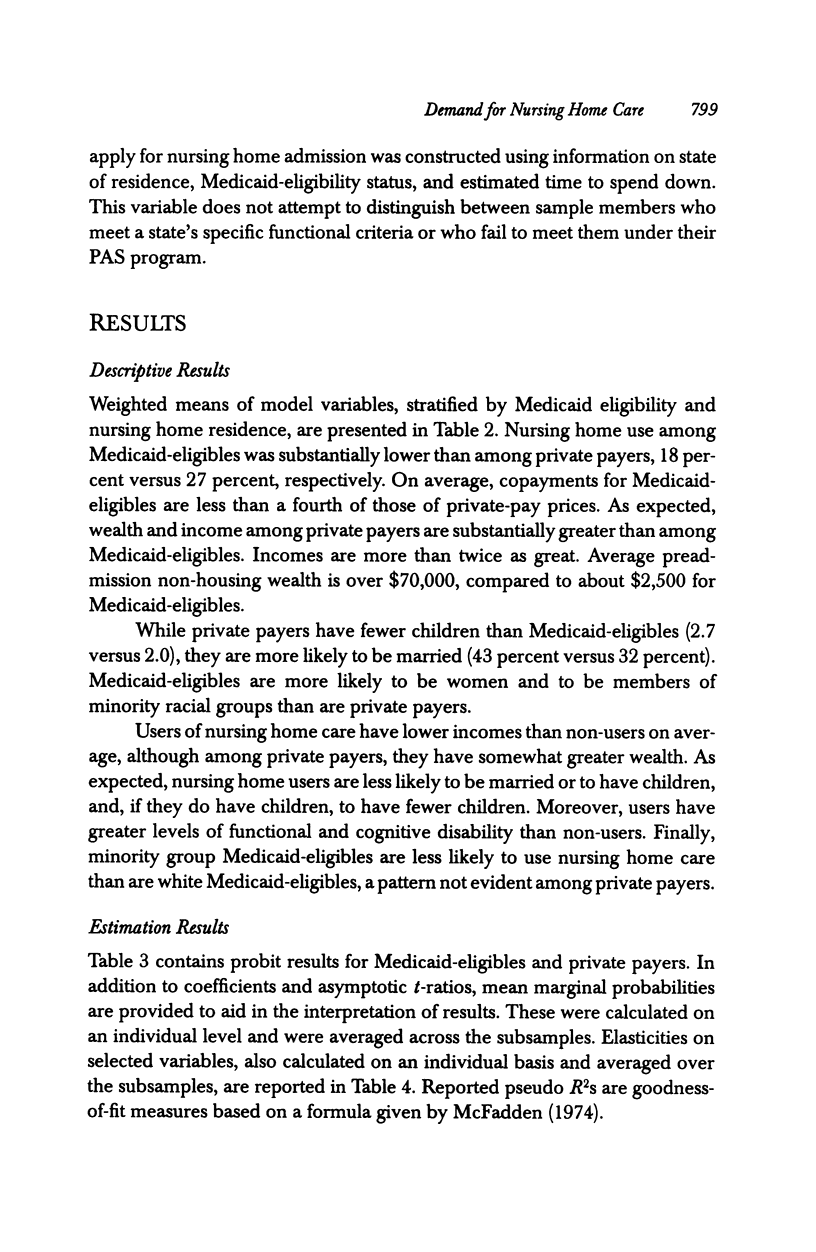
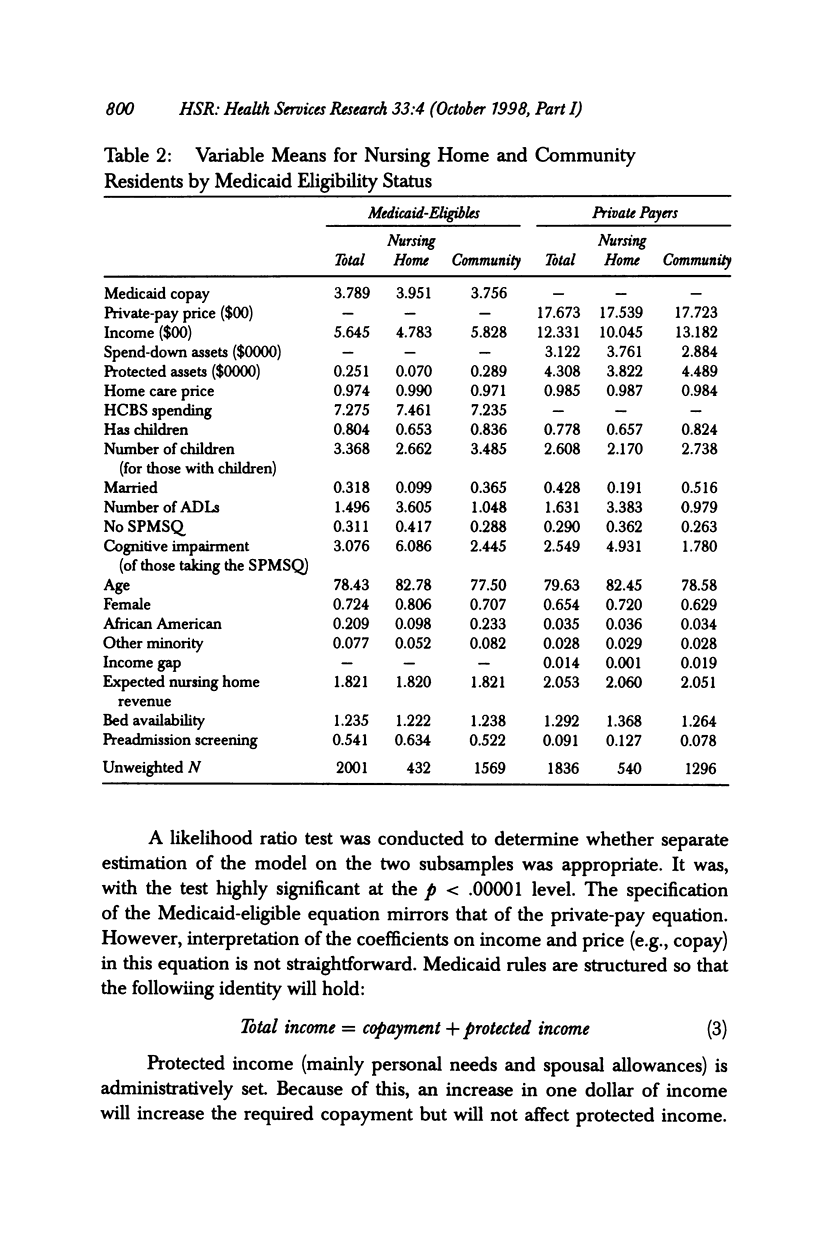
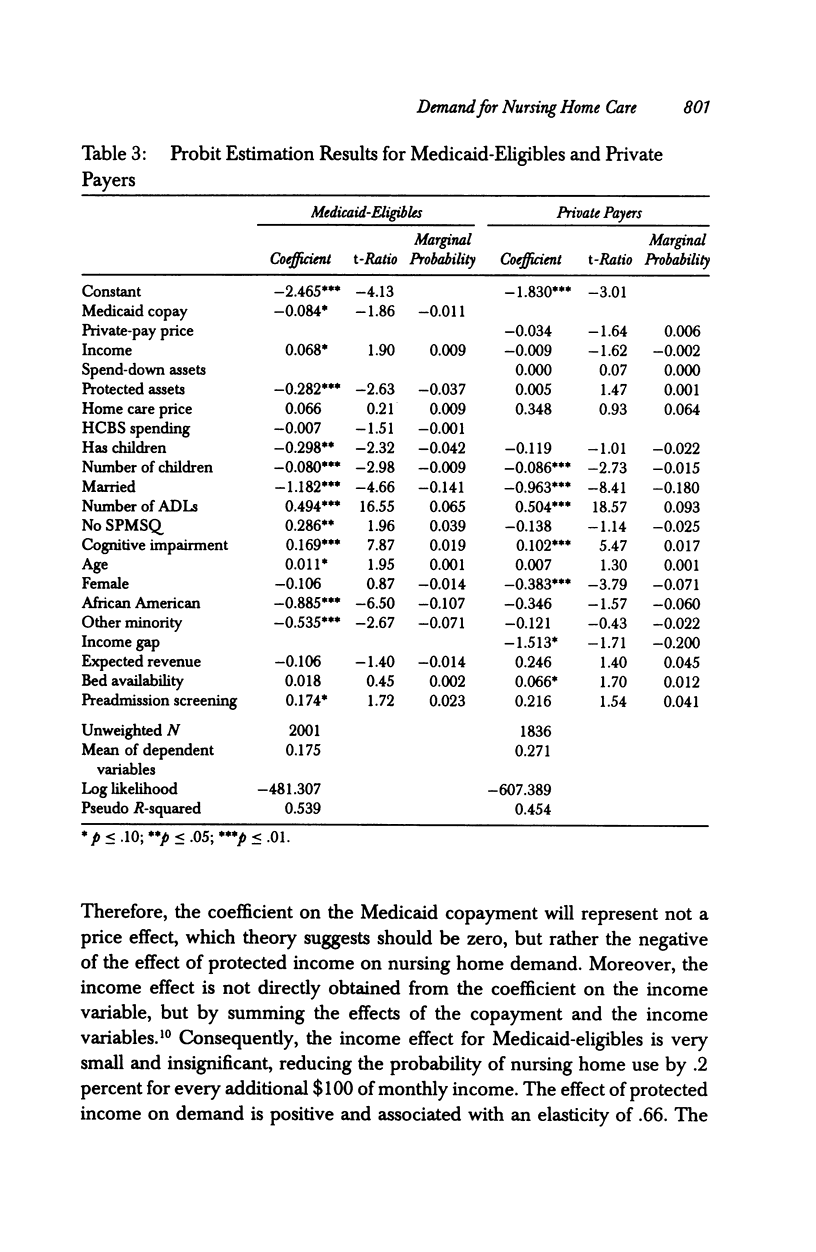
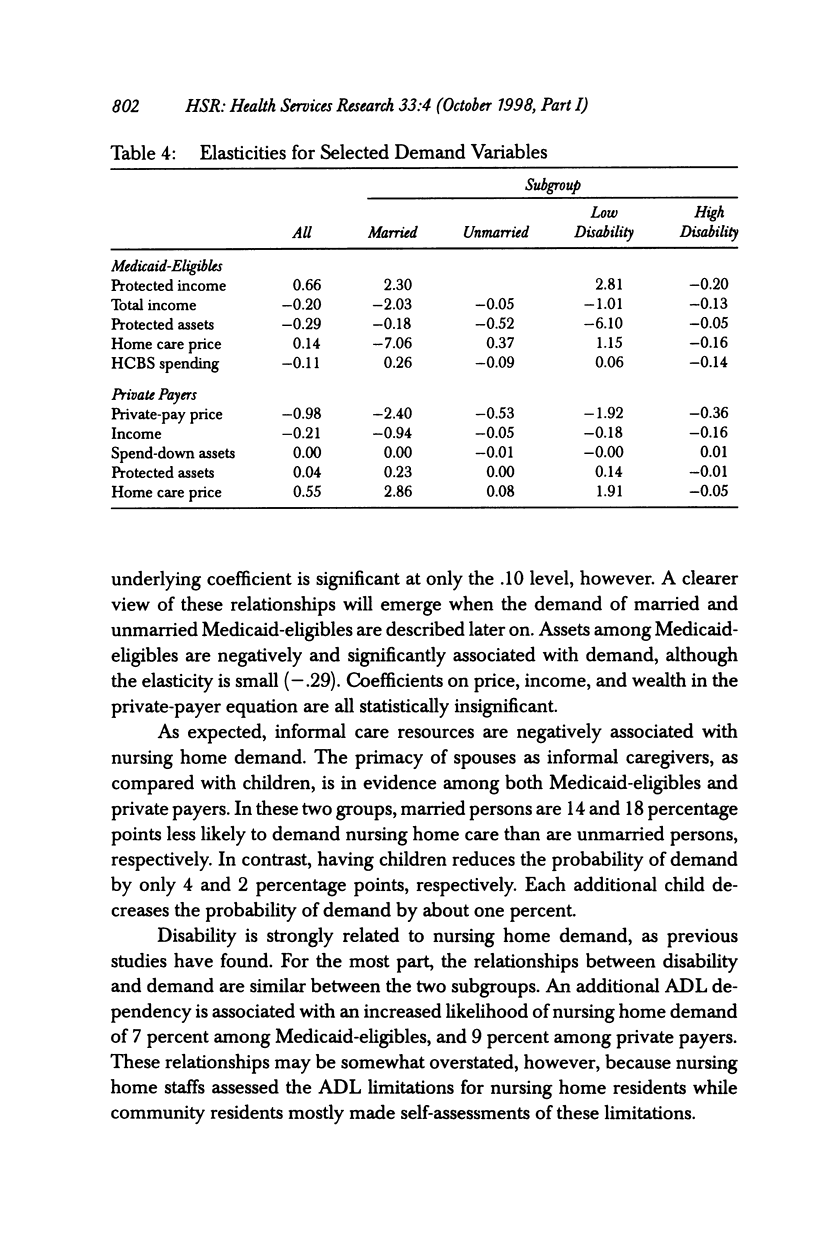
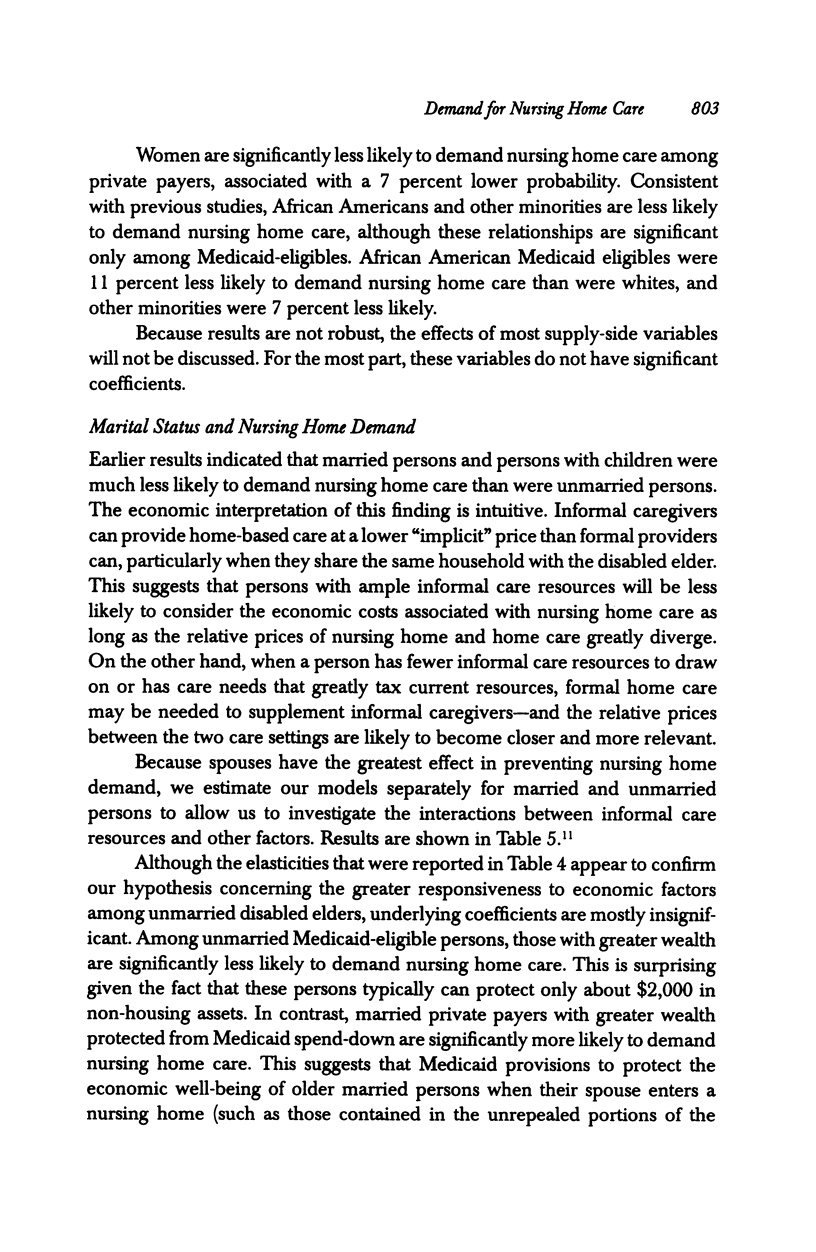
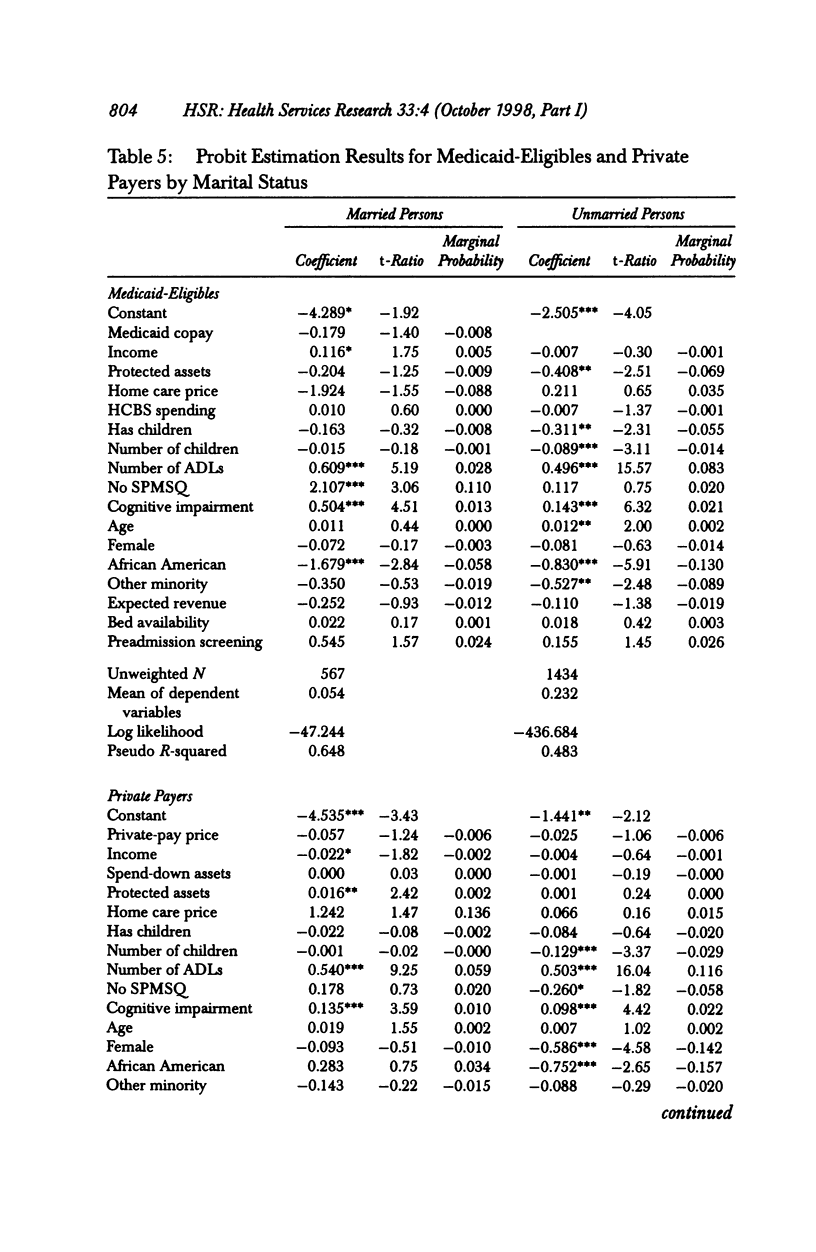
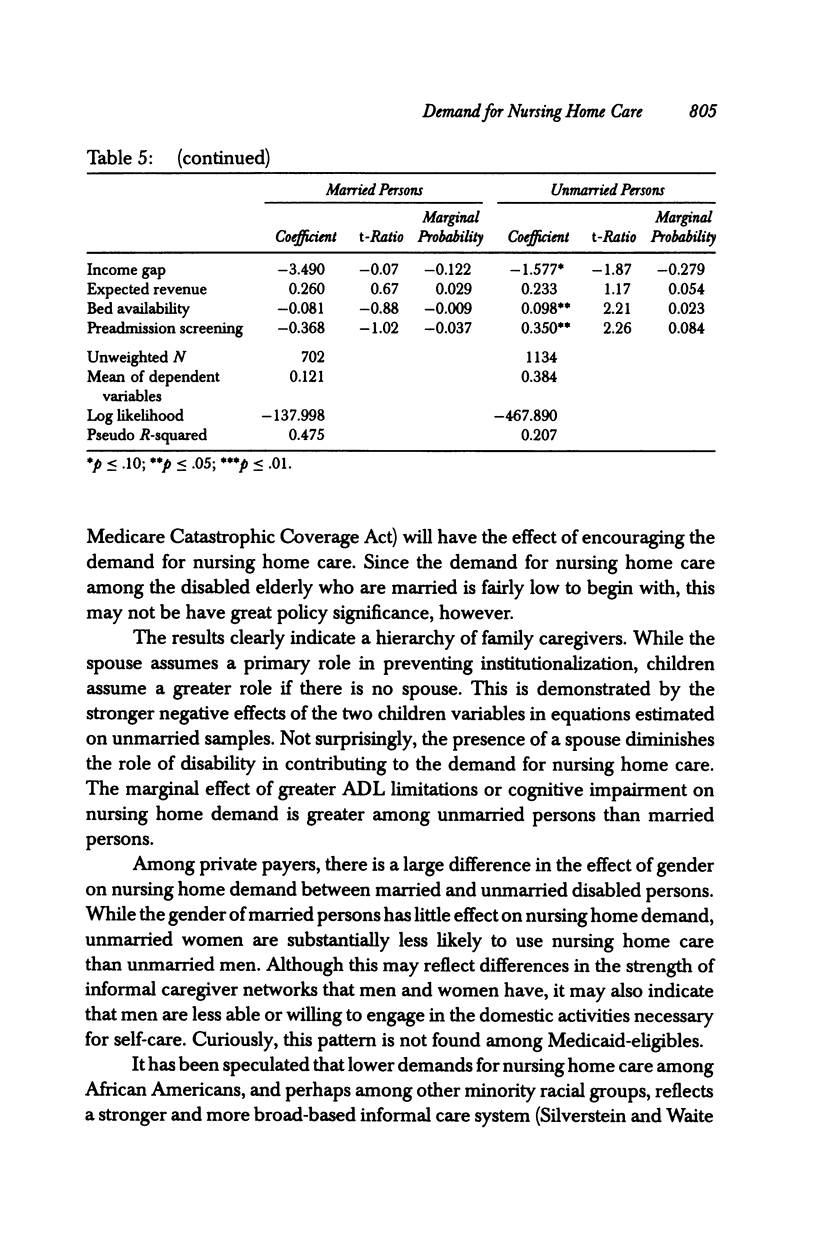
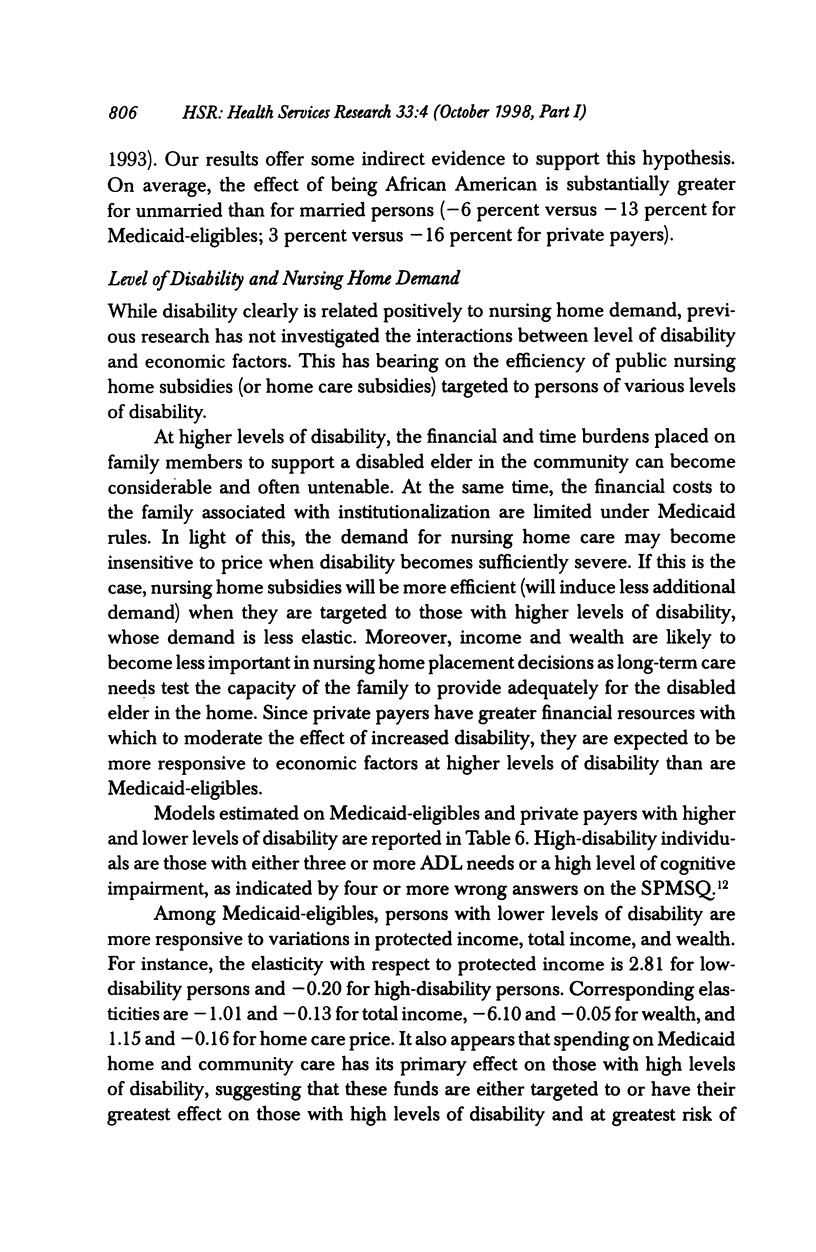
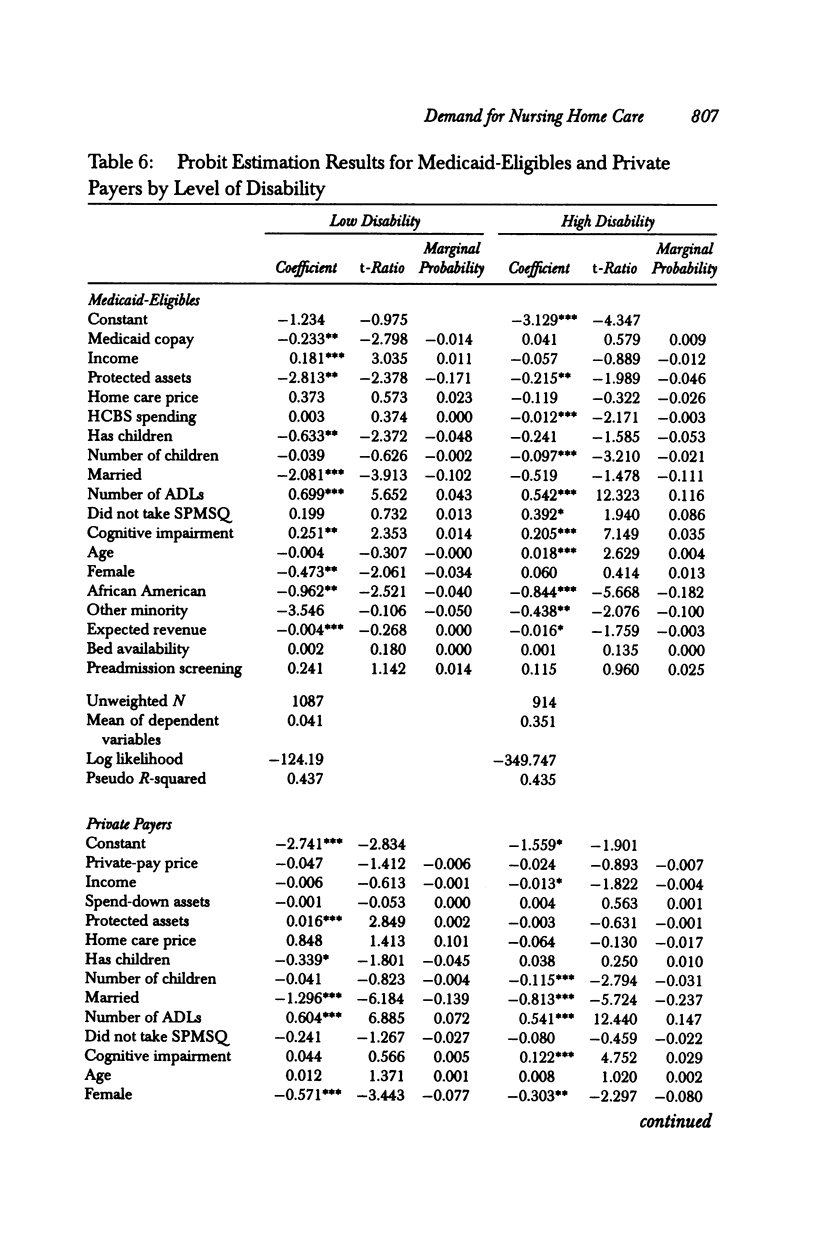
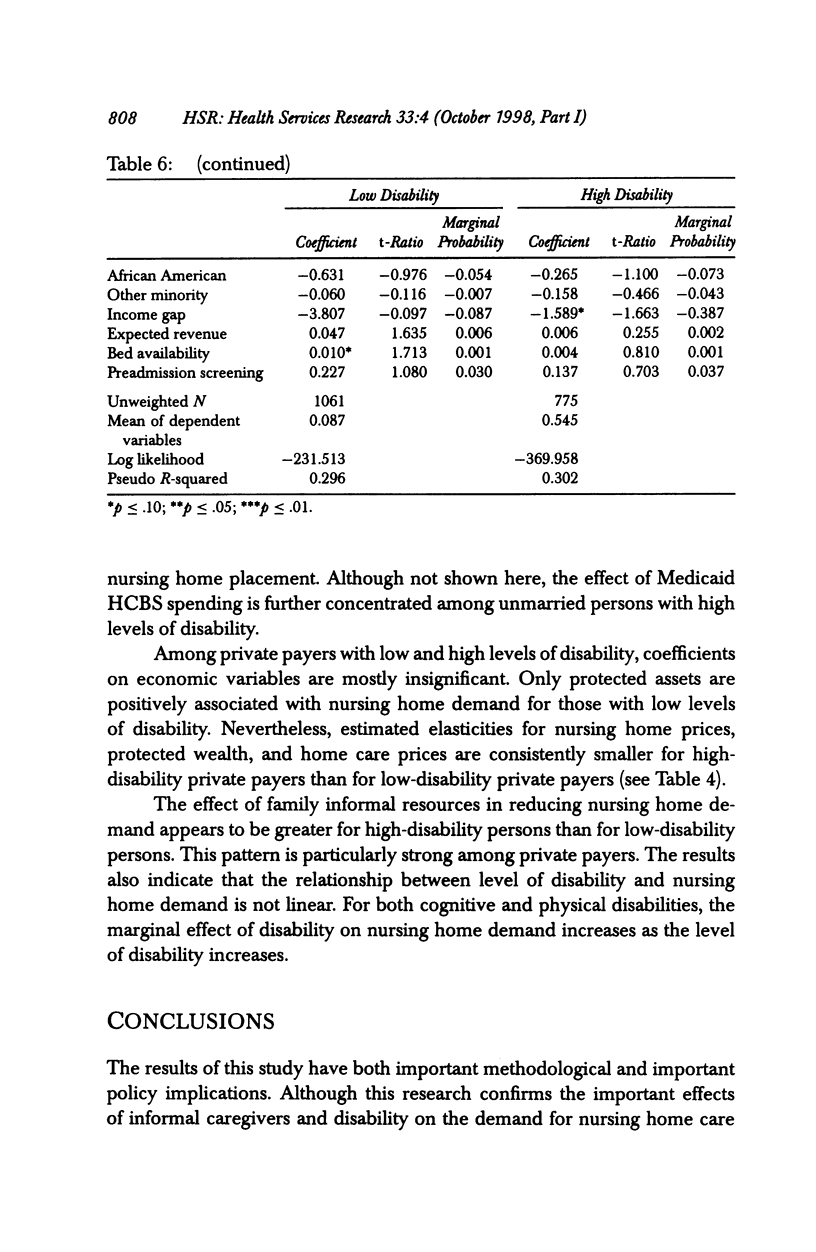
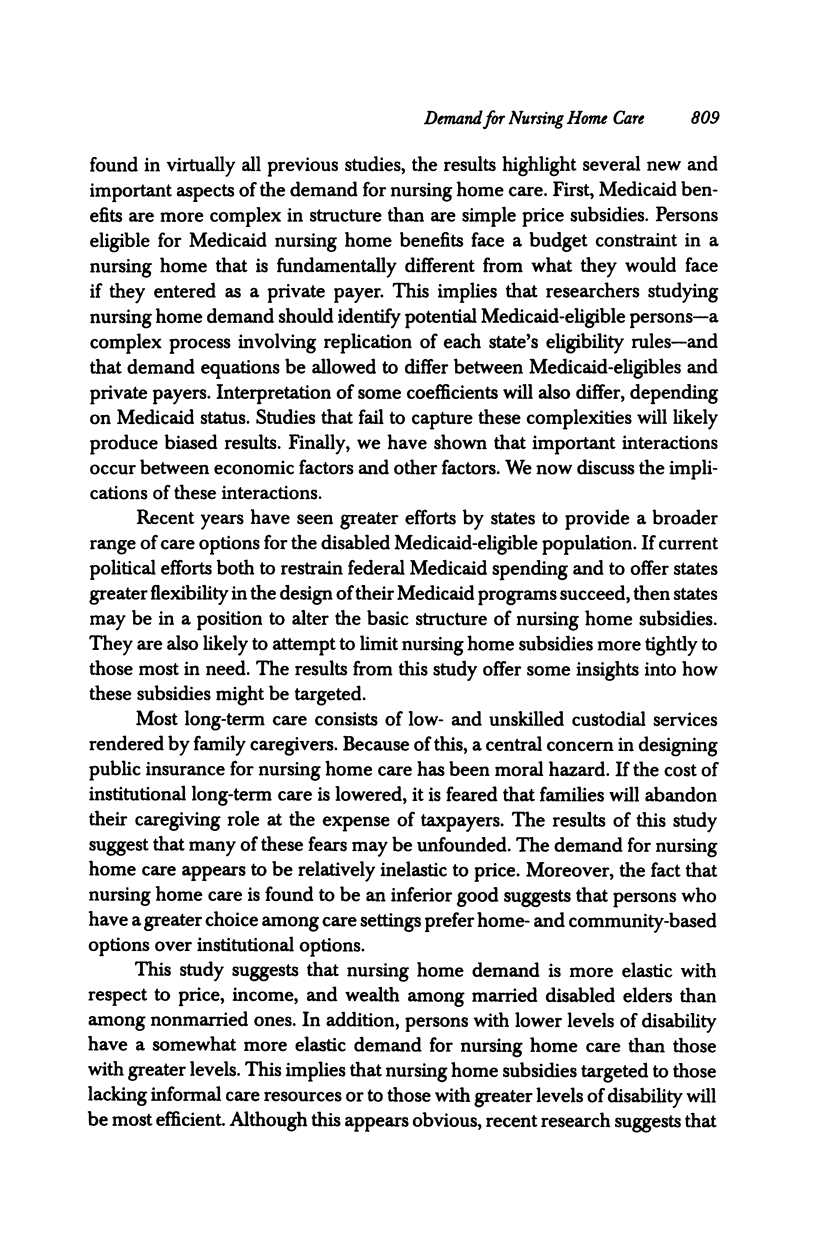
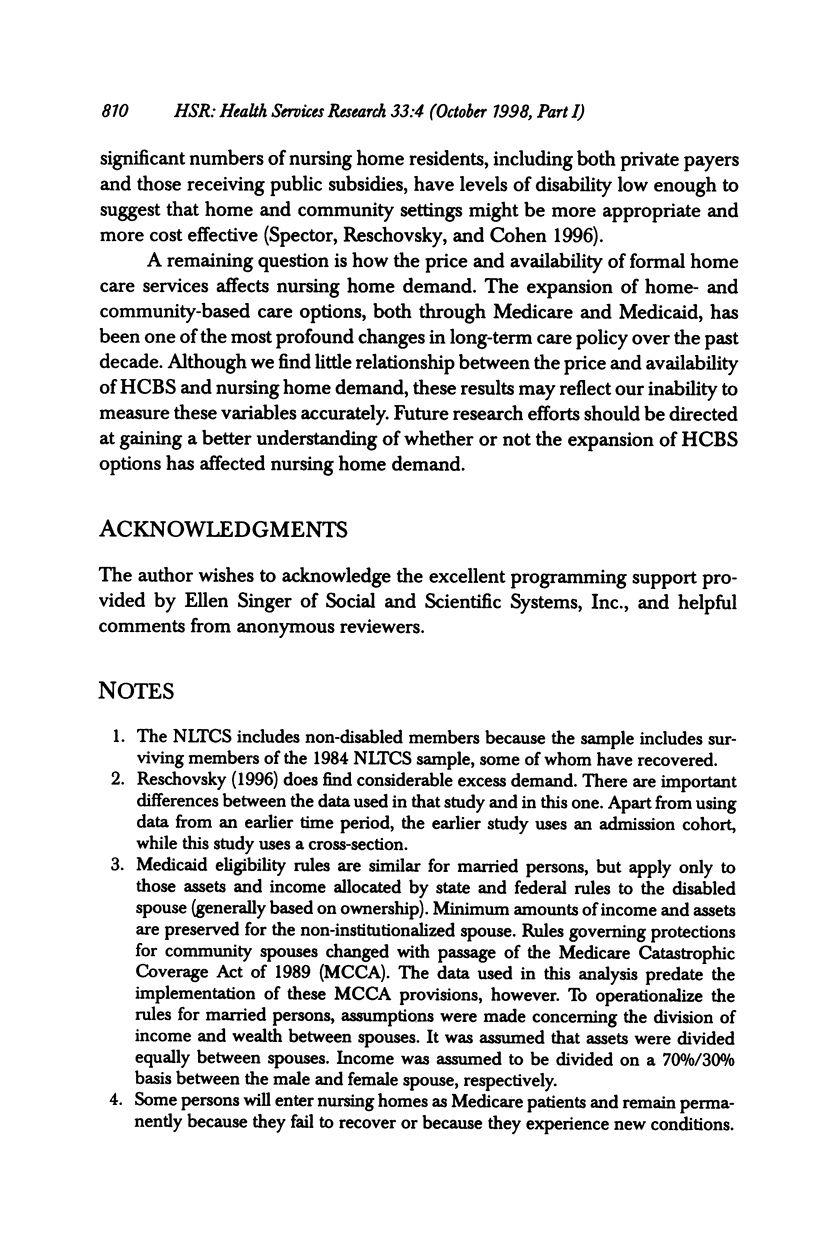
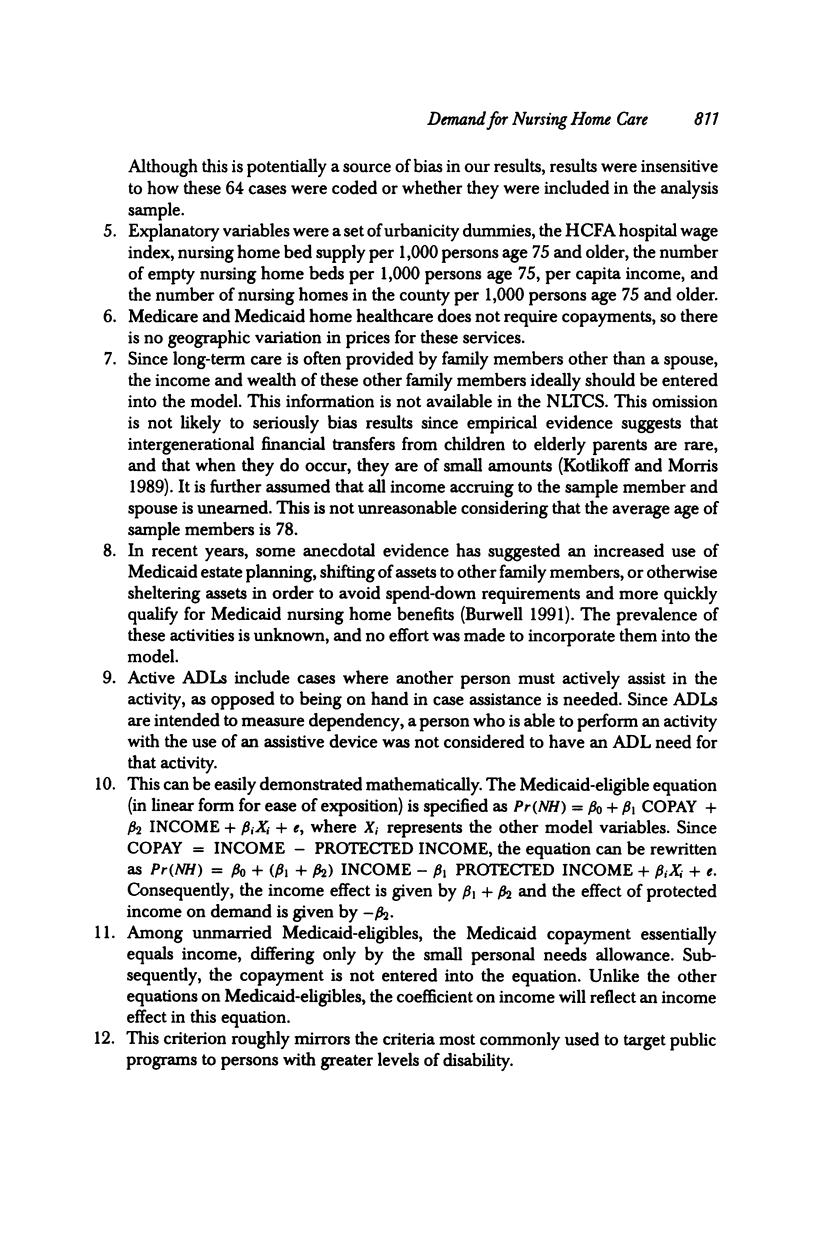

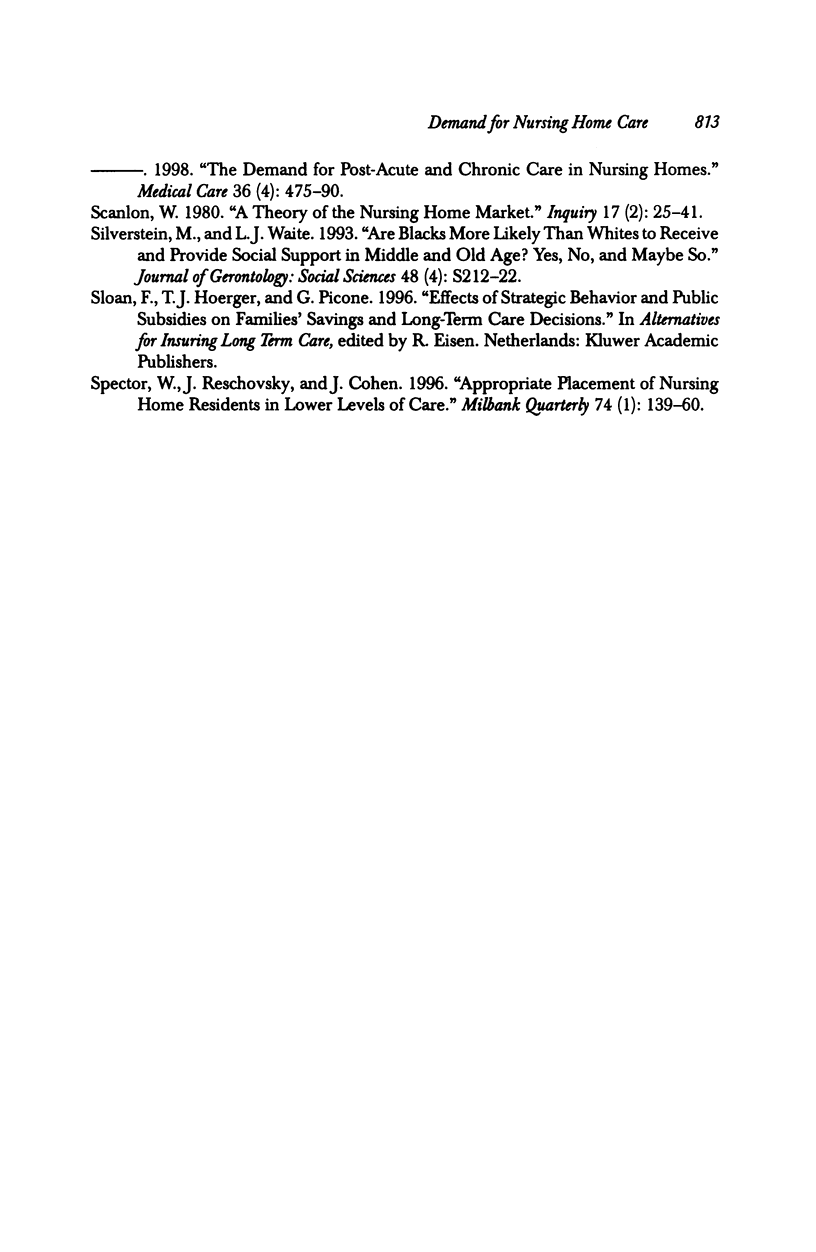
Selected References
These references are in PubMed. This may not be the complete list of references from this article.
- Kemper P., Murtaugh C. M. Lifetime use of nursing home care. N Engl J Med. 1991 Feb 28;324(9):595–600. doi: 10.1056/NEJM199102283240905. [DOI] [PubMed] [Google Scholar]
- Lamberton C. E., Ellingson W. D., Spear K. R. Factors determining the demand for nursing home services. Q Rev Econ Bus. 1986 Winter;26(4):74–90. [PubMed] [Google Scholar]
- Levit K. R., Sensenig A. L., Cowan C. A., Lazenby H. C., McDonnell P. A., Won D. K., Sivarajan L., Stiller J. M., Donham C. S., Stewart M. S. National health expenditures, 1993. Health Care Financ Rev. 1994 Fall;16(1):247–294. [PMC free article] [PubMed] [Google Scholar]
- Nyman J. A. The private demand for nursing home care. J Health Econ. 1989 Jun;8(2):209–231. doi: 10.1016/0167-6296(89)90004-0. [DOI] [PubMed] [Google Scholar]
- Polich C. L., Iversen L. H. State preadmission screening programs for controlling utilization of long-term care. Health Care Financ Rev. 1987 Fall;9(1):43–49. [PMC free article] [PubMed] [Google Scholar]
- Reschovsky J. D. Demand for and access to institutional long-term care: the role of Medicaid in nursing home markets. Inquiry. 1996 Spring;33(1):15–29. [PubMed] [Google Scholar]
- Scanlon W. J. A theory of the nursing home market. Inquiry. 1980 Spring;17(1):25–41. [PubMed] [Google Scholar]
- Silverstein M., Waite L. J. Are blacks more likely than whites to receive and provide social support in middle and old age? Yes, no, and maybe so. J Gerontol. 1993 Jul;48(4):S212–S222. doi: 10.1093/geronj/48.4.s212. [DOI] [PubMed] [Google Scholar]
- Spector W. D., Reschovsky J. D., Cohen J. W. Appropriate placement of nursing-home residents in lower levels of care. Milbank Q. 1996;74(1):139–160. [PubMed] [Google Scholar]


